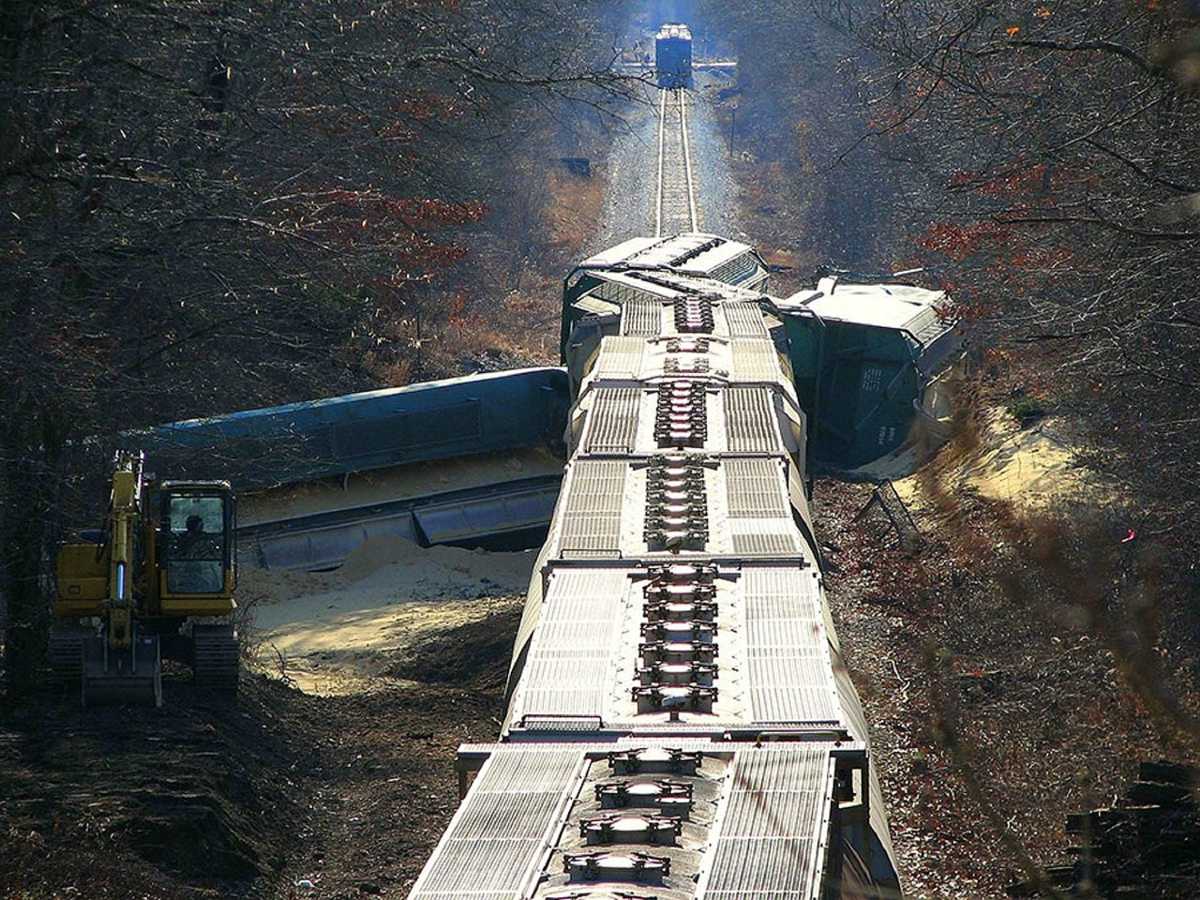Learning from East Palestine to respond to Hazardous Waste Spills with Data
On February 3, 2023, in East Palestine, Ohio, a train derailment spilled more than 100,000 gallons of dangerous chemicals.
The derailment also caused a fire burning hazardous fuel and sending plumes of toxic smoke into the air. This left thousands of local residents watching and worrying about their water and air quality and ultimately, their health and lives.
Government officials tried to assure residents the situation was under control, but the evidence of environmental fallout was significant. After the derailment, and during the subsequent “vent and burn” fires in the following days, the EPA found particulate matter, a component of air pollution that can be produced during fires, above National Ambient Air Quality standards, which is most dangerous to children, the elderly and people with respiratory or heart conditions. As an example, according to the Department of Natural Resources, 43,000 animals died in the weeks following the disaster further emphasizing the impact of the spill.
The emergency response in a disaster like this is always the first priority. Then comes the long-term recovery and clean-up process -a daunting task that if not done right can result in massive environmental violation fines and loss of public trust.
Preparing for Disaster to Maintain Public Trust
There were 9,770 train accidents and incidents reported in 2022. Not all resulted in spills requiring a massive clean-up effort, but this number proves disaster can strike at any time along a rail line. While it may be difficult to predict where and when incidents may occur, the resources required to respond and recover must be readily available.
The response must include:
- Rapid response with the ability to test and determine if hazardous chemicals have spilled and if so, the potential magnitude of the impact.
- The ability to know where and at what rate dangerous chemicals are impacting the environment to give citizens advanced notice to stay out of harm’s way. These data collection points can continue to be used to provide real-time updates until all threats have been remedied.
- Testing to confirm clean-up efforts have been successful. If clean-up efforts do not meet federal standards, environmental violation fines would be assessed, and the government would require further clean-up and remediation efforts.
The challenge is these resources must be available on-call and activated quickly, to respond to any one of the 9,000+ incidents that happen each year, any one of which could be the next toxic disaster.
Responders Need the Right Tools Ready When Time is of the Essence
In the case of East Palestine, Ohio, local government officials could not quickly test air and water samples to make data available in real time to inform residents of the impact of this derailment. The results of the lack of real-time, fact-based data force government officials to rely on anecdotal evidence to convince the citizens the water and air were clean. In the days and weeks after the spill, we saw politicians timidly sip the water from East Palestine to demonstrate that they thought it was safe; however, this did not sway sceptical residents. People knew what they were seeing and needed hard facts, and they were not getting them.
This lack of data can be addressed by having ready to deploy sensors and advanced analytics tools readily available, so immediately after a derailment or crash of toxic cargo, the sensors can be quickly deployed to collect the environmentals and then begin analysing the data, such as soil, water and air samples. This data can then be layered on maps of water routes and weather patterns to determine where toxic chemicals may have spread and if and when residents are safe.
With a complete understanding of what is in the environment, where it is headed and when people are out of danger, citizens and government officials can proceed with full situational awareness. Advanced analytics can take into consideration all of the factors at play, water routes, wind direction, traffic pattern, population density and more to better inform response and clean-up efforts.
Keeping People Safe and Informed with Advanced Analytics & Real-Time Data
Not all freight incidents and accidents will have the same factors in play, but any incident with dangerous hazardous materials requires a data-based approach to evaluating danger and monitoring the response. Timeliness in the response and recovery is the key requirement.
Advanced analytics, combined with geospatial intelligence, gives first responders and clean-up crews a single, clear view of the situation and potential impact and outcomes by calculating and analysing multiple relevant data sets.
This technology is not just available for spills but can be used to map other environmental hazards, like tracing toxic lead pipes in Flint, Michigan. In this example, residents could type in their addresses and learn if the pipes that fed their homes were putting their families at risk of lead poisoning. In the case of East Palestine, Ohio, a similar resource could have benefited residents so they could see if their water source or air quality was contaminated.
Preparing to Deploy Data Analytics When Disaster Strikes
Rather than waiting for a disaster to strike, rail and all transportation companies, alongside government agencies, owe it to the adjacent communities to be prepared and have data-based emergency response plans in place. Before a crisis strikes, they should have a full understanding of what data sets will need to be merged and analysed in the case of an emergency. Having these resources available can lead to a more effective response and recovery – and increase public trust.
When provided with real-time data, residents can make informed decisions about their safety and answer questions like: Do they want to leave the area until it has been cleared and do they need to avoid drinking water from the tap? Data can answer these questions for citizens and first responders. Leveraging advanced analytics on that data gives everyone involved an efficient tool to help keep people safe and avoid costly environmental damage.
Article by Ray Falcione, VP & General Manager of Federal




















